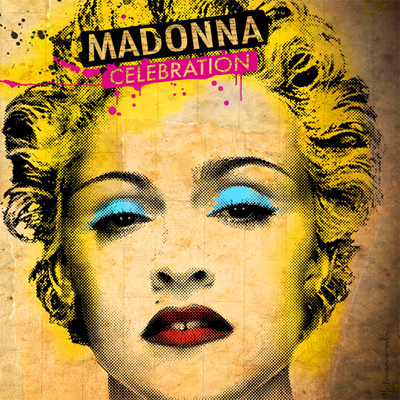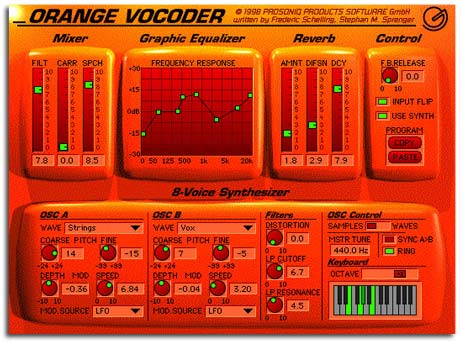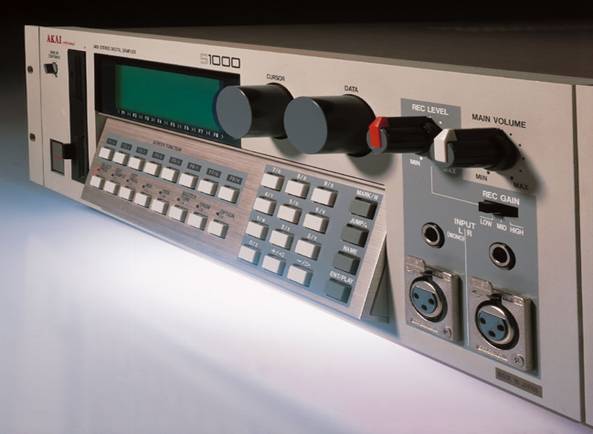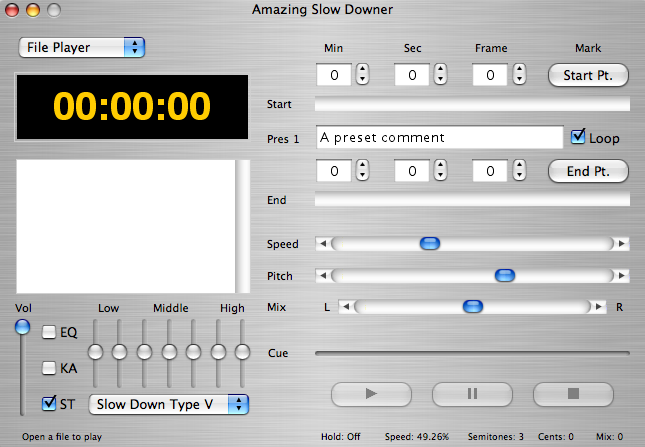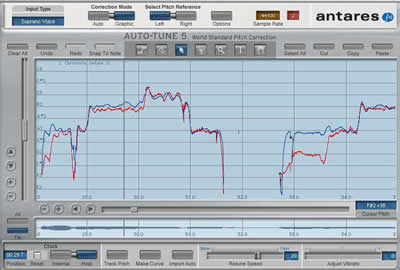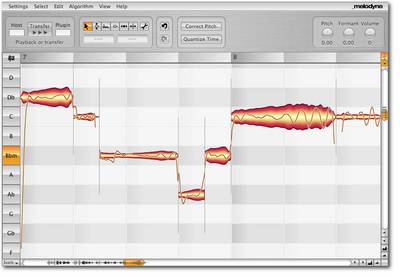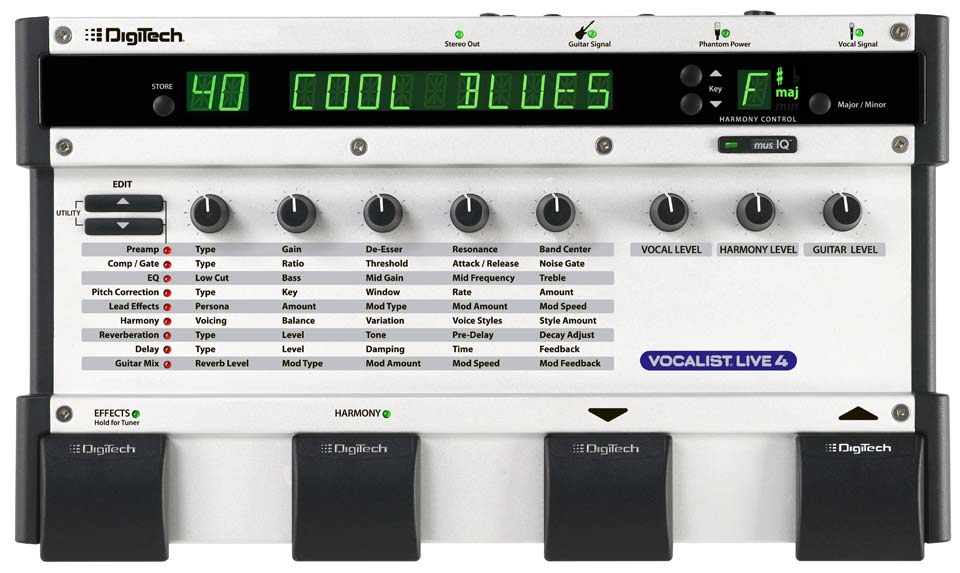Posts Tagged Cher
A Perspective On Madonna
Posted by Gavin Bradley in Singing, Writing on October 19, 2009
I’m not a music snob.
As boring as I think Britney Spears is, I own a copy of the 12″ single of ‘Baby One More Time’ because I think that song was a piece of pop writing on par with some of Abba’s achievements: every line of the melody is a hook. When I find myself in conversations with people who pride themselves on being perceived as connoisseurs of far-flung artists just for the exclusivity of being in on the obscure, I tend to bring up top 40 songs like ‘Love At First Sight’ and ‘In Your Eyes’ by Kylie Minogue…not because I’m a fan in particular, but because those are well-crafted songs whose writers chose the right moment to cleverly bite the style of some 80s Olivia Newton-John singles. Whether an artist’s material works or not, to me, is a separate issue from how commercial or anti-commercial they choose to be.
However I don’t think it’s coincidence that many of the biggest female icons in music have been regarded as nothing more than pop fluff. They are not thought of as making musical contributions on the level of, say, Bruce Springsteen, Billy Joel, Prince, or even John Legend or Robbie Williams…in part because, when it comes to music, western society still shows its dyed-in-the-wool patriarchal values: the straight white male audience still ultimately dictates what is perceived as serious music in the mainstream.
But it can be argued that gay men, in fact, stand at the epicenter of pop music. Because, as early adopters and fiercely loyal supporters of the artists that appeal to them, they cause everybody else to look up and wonder what the hell all of the commotion is about.
The undying support of an army of gay men stands behind virtually every major female star from Liza Minnelli, Barbra Streisand, Cher and Bette Midler to Diana Ross, Tina Turner and Donna Summer, through to Cyndi Lauper and Whitney Houston, past Tori Amos and Sarah McLachlan, up to Britney Spears, Beyoncé and Lady Gaga. It seems clear that the messages strong female figures are apt to convey help give voice to a part of the gay male psyche. Surnames are dropped as gay men begin to regard these women–from Janet to Kylie to Celine–as close personal friends. Few male artists get that kind of rousing support from the gays, besides passing fixations with boy bands and a handful of gay-like-us mascots such as Elton John, George Michael and the Pet Shop Boys, awarded the solidarity of the queer masses even when the relevance of their output has dimmed.
Labels know they’ve got a hit act when straight men begin to find themselves dragged to homocentric concerts by their hip girlfriends. And you won’t find many solo male artists with the staying power of these women, doing huge stadium shows years or decades after first appearing on the scene.
Of all of the female icons, Madonna has carved out the deepest, widest swath. My fellow gays have tried to engage me in ‘Kylie vs. Madonna’ or ‘Britney vs. Madonna’ arguments. You may be drawn to Kylie because she’s more refined, or you may be drawn to Britney because she’s more Of-The-Now, but personal taste aside those arguments seem somewhat ludicrous to me: it’s a fact that Madonna has had the most impact musically and culturally for the longest period of time. An important distinction: unlike many on the Diva List, she’s been at the helm of her career this whole time…from manipulating her own image to co-writing much of the material she sings (right back at the beginning she wrote ‘Lucky Star’ on her own). The release of her fourth hits compilation, ‘Celebration’, seems as fitting a time as any to discuss what exactly her contribution has been.
I followed her output with increasing anticipation from the beginning up until the late 90s, around the time of ‘Music’. For me, the golden period was from the release of the ‘Like A Prayer’ video to the release of the ‘Erotica’ single, inclusive, because during that run she seemed to tap into the subjects and aesthetics I was ready to absorb at the time. Through the various phases of her career, that type of synchronistic experience has not been uncommon for whoever her 20-something gay male fans happen to be at the time. After the release of ‘American Life’ I rolled my eyes when a 20-ish gay grabbed my shoulders and shook me saying ‘no you don’t understand how brilliant she is’. ‘How brilliant she is’ was old news, and this was just a new incarnation of Madonna doing her thing…pushing the hot buttons of the collective psyche of a new generation.
She’s stated that button-pushing is her agenda. Having been given the name ‘Madonna’ at birth, she then had the wits to parlay those built-in religious connotations into a Mother Mary vs. Mary Magdalene (ie. a Madonna-Whore dichotomy) by introducing a heavy dose of overt sexuality into the balanced equation that became her persona. Other female icons who opt to sexualize their image don’t have that built-in balance, because they aren’t inherently pressing that other universal button…the Religion button…all the while.
In the late 80s and early 90s the trendy way to dismiss Madonna was to say ‘well, she’s a great business person, I respect her for that,’ – implying that there wasn’t much else to respect her for. But I think it bears repeating that she’s often had her finger on the pulse, not just in a surface way, co-opting fashion and dance from subcultures at the right moment, but also in that synchronistic way, tapping into the questions people in their late teens and early 20s are grappling with at any given time. Her precocious curiosity has caused her to ask the right questions at the right moment…coaxing the public consciousness forward to confront specific sexual, religious and political issues…coaxing a little bit of liberalization here and there.
Nobody ever considered Madonna a great singer, herself included: she admits it in the ‘Truth Or Dare’ documentary, and a few years later, before filming ‘Evita’, she began taking singing lessons in an attempt at self-improvement. In her earliest recordings she was squeaky and uncontrolled. But there’s something else there that I feel is rarely, if ever, acknowledged: there’s a spirit in those performances, an unbridled, uncontrolled passion that made it clear to all of us that she was really throwing herself into it. And because she believed so strongly in what she was singing, many of us bought it too.
Witness the moments of full throttle rasp on this series of clips from her pre-singing-lesson days: ‘Holiday’ (from her self-titled debut album), ‘Into The Groove’ (from the ‘Desperately Seeking Susan’ soundtrack), ‘Papa Don’t Preach’, ‘Open Your Heart’ and ‘Where’s The Party’ (from ‘True Blue’), ‘Express Yourself’ (from ‘Like A Prayer’) , ‘Vogue’ and ‘Rescue Me’ (both from ‘The Immaculate Collection’). On the last three, support from her new mainstay background singers Donna DeLory and Niki Haris drove her to push even harder.
In those days, she also did something vocally that gave the impression she was on the verge of tears as she sang. On certain lines in ‘Stay’ (from ‘Like A Virgin’), ‘Open Your Heart’ (from ‘True Blue’), ‘The Look Of Love’ (from the ‘Who’s That Girl’ soundtrack), ‘Dear Jessie’ and ‘Til Death Do Us Part’ (both from ‘Like A Prayer’) she articulates a depth of emotion by lowering her tone to a throaty yawn. (The most obvious example is the line ‘your love parade’ toward the end of the clip of ‘Dear Jessie’.)
According to vocal teachers this yawny tone is the result of a singer lowering or ‘depressing’ their larynx, and it’s not considered good vocal technique. However it’s emotionally effective: we hear her veering toward tears and we veer emotionally with her. I doubt this was pre-meditated on her part; she was probably just using what she had available to her, naturally, to make us feel something. To me, this is what music is about…when something works emotionally, technique is quickly made irrelevant.
After training for ‘Evita’ she immediately became self-conscious of her delivery. On ‘You’ll See’ (from ‘Something To Remember’) she’s lost all of her spontaneous passion…and we’ve lost the Madonna that threw herself into things so fully. On ‘Frozen’ and ‘The Power Of Goodbye’ (from ‘Ray Of Light’) she’s found a more suitable direction, material-wise, for her opera-esque vocal approach…but it was not until many years later on ‘Hung Up’ that she reconnected that improved vocal technique with her passion and urgency.
Self-consciousness has also been her enemy when it comes to lyric-writing. At a certain point, perhaps after the personal, confessional writing on the ‘Like A Prayer’ album received critical praise, Madonna decided she could go deeper lyrically…sometimes to good effect, but more often not. ‘Erotica’ contains a mess of a ballad called ‘In This Life,’ a song dedicated to AIDS victims. While her intentions may have been good, this is the definition of poor writing: going nowhere melodically, and lyrically hitting us over the head with overwrought emotion and clichés.
On ‘Bedtime Stories,’ her foray into R&B, she succeeds in growing, lyrically, on ‘Secret’ and ‘Survival,’ discovering clever ways to deliver heavy-handed philosophical messages indirectly. On the former she delivers the universal truth of ‘learning to love yourself’ in an egoless fashion by presenting it as a secret someone else possessed (and she didn’t); and on the latter she confesses, with humility, that just like everybody else her life is about survival. After gaining our trust by speaking to us as equals, we can receive her ‘no risk, no glory’ philosophy without feeling that we’re being preached to.
Madonna had also contacted Bjork, asking her to write a song for this album. Bjork culled ideas from a track rejected from her own ‘Post’ album (‘Sweet Intuition’ a/k/a ‘Sweet Sweet Intuition’), remodeling it as ‘Bedtime Story’ for Madonna. Knowing this, one can only postulate that Madonna admired Bjork’s esoteric lyrical sensibility, and, feeling co-opted, Bjork’s response was to work the system by giving her a recycled b-side that then became a lucrative writing venture…after all it became a Madonna single.
Madonna’s writing style on ‘Ray Of Light’ seemed to be an attempt at that off-center Bjork-esque weirdness she admired. Many of the sincerely introspective songs succeeded, but songs like ‘Skin’ rang with an obvious attempt at obliqueness: it’s not believable when Madonna pushes herself to be anywhere near as eccentric as Bjork is. On songs like ‘Sky Fits Heaven’ she takes it upon herself to dispense lofty advice to us from a prophet. Later in the track she tempers her preachiness, bringing herself back down to our level by listing what her life choices have been, for better or for worse.
Much of ‘American Life’, and parts of the albums on either side of it, presented a Madonna that had come to believe she had important philosophies to teach the world. This was likely an intersection of Kabbalah evangelism and her self-awarded position of ‘experienced elder who had been through the fame machine and come out the other side’. She is equally obnoxious critiquing her country of birth from her adopted home in the UK (on the title track) as she is chastising herself aimlessly on ‘I’m So Stupid,’ a song that seems as though it was written off the top of her head. On ‘Let It Will Be’ (from ‘Confessions On A Dance Floor’), she can’t resist interrupting a great return-to-form album with more advice from the other side of fame. This Madonna wasn’t received as readily, partly because her promotion to teacher was not entirely believable, and partly because it’s not easy to stomach famous people lecturing on the woes of fame.
‘Nothing Fails,’ (from ‘American Life) works when she confesses personal feelings of love. It falls apart in the next verse when she speaks to us from her high horse again, proclaiming her own wisdom with ‘you could take all this, take it away, and I’d still have it all cause I’ve climbed the tree of life and that is why I’m no longer scared if I fall’.
What Madonna fails to realize is that she makes music that connects and transcends…but only when she zens out: only when she doesn’t overthink her singing or pressure herself to be deep, oblique or wise. I’m glad this new compilation is themed as it is, because her celebratory songs like ‘Holiday’ have served a more profound purpose than some of her spiritual musings. Her delivery of the melody in ‘Holiday’ has a tinge of melancholic depth to it and the groove has lifted many a spirit over the quarter century since it first appeared. ‘Express Yourself’ was a passionately belted call to action that was equally feminist, fun and sexy. The ‘Ray Of Light’ album caught her at a moment of reflective experimentation before she fully decided to crown herself armchair philosopher with a really loud microphone. The meandering path she’s been on since then, only broken briefly by the core of ‘Confessions On A Dancefloor,’ has proven that even after plying us for years with sugar and honey in the form of fun dance anthems, the world doesn’t need every artist to enter a ‘deep experimental’ phase the way the Beatles, Radiohead, Bjork or Joni Mitchell have: Madonna’s rousing anthems and unselfconscious, sincere moments have been profoundly useful enough to earn her a place in many of our lives.
Abba, American Life, Baby One More Time, Barbra Streisand, Bedtime Stories, Bedtime Story, Bette Midler, Beyoncé, Billy Joel, Bjork, Britney Spears, Bruce Springsteen, Celebration, Celine Dion, Cher, Confessions On A Dance Floor, Cyndi Lauper, Dear Jessie, Desperately Seeking Susan, Diana Ross, Donna DeLory, Donna Summer, Elton John, Erotica, Evita, Express Yourself, Frozen, george michael, Holiday, Hung Up, I'm So Stupid, In This Life, In Your Eyes, Into The Groove, Intuition, Janet Jackson, John Legend, Joni Mitchell, Kylie Minogue, Lady Gaga, Let It Will Be, Like A Prayer, Like A Virgin, Liza Minnelli, Love At First Sight, Lucky Star, Madonna, Niki Haris, Nothing Fails, Olivia Newton-John, Open Your Heart, Papa Don't Preach, Pet Shop Boys, Prince, Radiohead, Ray Of Light, Rescue Me, Robbie Williams, Sarah McLachlan, Secret, Skin, Sky Fits Heaven, Something To Remember, Stay, Survival, Sweet Intuition, The Beatles, The Immaculate Collection, The Look Of Love, The Power Of Goodbye, Til Death Do Us Part, Tina Turner, Tori Amos, True Blue, Truth Or Dare, Vogue, Where's The Party, Whitney Houston, Who's That Girl, You'll See
I’m Only Inhuman: Vocal Trickery Through The Ages
Posted by Gavin Bradley in Creative, Engineering, Playing, Production, Remixing, Singing on September 6, 2009
Not content to replace pianos with synthesizers and drum kits with drum machines, producers have spent the last few decades pushing against that final frontier: the mechanization of the human voice. How have we dehumanized ourselves? Let me count the ways.
1. The Vocoder
In the mid-70s ‘robot voice’ tracks began turning up in earnest. Kraftwerk was at the forefront with the Vocoder (not the Vocorder, as it is so often mispronounced, but the Vocoder: it is a ‘coder’ of ‘vocals’). For many years the Korg Vocoder was the standard unit, but all vocoders work on the same principle: you sing into a mic and the electric signal created by your voice shapes the sound coming out of the synthesizer.
One of the first commercial hits with a female robot vocal upfront was ‘Funkytown’ by Lipps Inc., in 1980. In 1983 Styx gave us ‘Mr. Roboto’.
In recent years software plugins like the Orange Vocoder have appeared, eliminating the need for another physical keyboard taking up space in the studio. The sound is a little less cutting–as the raw, aggressive squelch of old analog vocoders are still somewhat outside the realm of the computer–but tracks like 2002’s ‘Remind Me’ by Röyksopp have carved out a different niche for the software vocoder’s silkier sound. Korg’s MicroKorg keyboard and Ensoniq’s rackmount DP-4 have kept hardware vocoders alive.
2. The Talkbox
Stevie Wonder began using a talkbox in the early 70s, but after Parliament-Funkadelic alumnus Roger Troutman mastered the physically challenging device and formed funk band Zapp, radio got a steady stream of funk/R&B hits through the first half of the 80s.
A talkbox setup is in many ways the reverse of a vocoder. A synthesizer–typically a Yamaha DX100–set to produce a very strong, pure tone is plugged into the talkbox. A speaker driver inside the talkbox pumps the focussed sound out through a hose which is inserted into the corner of a singer’s mouth. As the singer forms words, their mouth physically shapes the sound from the synthesizer. This happens in front of a mic, which picks up the shaped synth sound coming out of the player’s mouth.
Roger Troutman’s command of the instrument shines on ‘I Wanna Be Your Man’.
For a visual demonstration, check out the great Stevie Wonder covering ‘(They Long To Be) Close To You’.
3. Retriggering
Evolving through the 80s, samplers like the Synclavier, Fairlight and Ensoniq Mirage were initially intended to realistically recreate acoustic instruments. The Emulator seemed to encourage more creative sampling however, and the Emu SP1200 was the sample-based drum machine that spawned the dopest hip hop beats. But by the late 80s the Akai S1000 was the rackmount sampler of choice, and the fact that you could expand the memory to load entire vocal tracks into it made retriggered vocal riffs the next logical step in house music.
In 1989 Black Box sampled parts of Loleatta Holloway’s vocal on 1980 disco hit ‘Love Sensation,’ placing it over new piano chords and a housebeat. The rhythmic retriggering of her impassioned vocal–the computerized sonic repetition of those growling phrases of sound–brought a clean, futuristic sensibility to dance music, an effect akin to referencing ‘Love Sensation’ in quotations. However at first those quotations were used without the appropriate footnotes…so court cases followed.
4. Stuttering
Through the early 90s house producer MK (Marc Kinchen) ran with vocal sampling, taking the retriggering concept to extremes.
Four examples of his work follow. On his remix of the B-52s’ ‘Tell It Like It T-I-Is’ he experimented with stuttering the last syllable of individual lines. This became a common technique borrowed by many producers, so MK forged further, finding a more individualistic practice: he began pulling single syllables from various places in the vocal track, reordering them to create hooky melodies (with nonsensical words). His 1993 remix of the Nightcrawlers’ ‘Push The Feeling On’ made massive waves, superseding the original version of the song without using a single intact vocal line. In demand as a remixer, he created hooky vocal stutters for the Pet Shop Boys on his remix of ‘Can You Forgive Her’ and for Blondie on his updated remix of ‘Heart Of Glass’, dropping the full vocal in between stuttered sections…and reportedly turning out one remix per week at $15-20K.
5. Timestretching
In the mid-90s Armand Van Helden took the baton, building a brand in part on the innovation of cheeky vocal processing techniques. ‘Timestretching’ audio using software plugins is a commonplace practice now, to make beats match in tempo or to conform an acapella to the desired speed of a remix. At the time, Armand Van Helden pushed the relatively new technology to the limit, placing ridiculously elongated vocal lines in the climaxes and dropouts of his tracks as dancefloor payoffs.
A few examples of this new intersection of the machine and the biological: he stretches the line ‘Sugar Daddy’ as a re-entry to the beat in his remix of CJ Bolland’s ‘Sugar Is Sweeter’; he stretches the hook vocal to prepare us for a drop out of the beat in his own track ‘The Ultrafunkula’ (the same track also exists as ‘The Funk Phenomena’); and finally during a dropout in his remix of Janet Jackson’s ‘Got Til It’s Gone’ he obsessively retriggers the sample of Joni Mitchell singing ‘don’t it always seem to go…’ (from ‘Big Yellow Taxi’), building to an unidentifiable, impossibly timestretched spoken line before dropping the beat.
All samplers and audio production software have a timestretch function, but it sounds like he used an early version of the ‘Amazing Slow Downer’ Mac program. Either that, or the application was conceived later specifically to achieve that Armand Van Helden sound.
6. Auto-Tune
In 1997 a company named Antares marketed a rackmount box that could automatically correct a singer’s pitch in real-time. Shortly afterward, they released a software plug-in that did the same thing but also allowed graphical re-drawing of the pitch of individual notes in a recording.
Strangely perfect-sounding vocals began to appear on pop, country and R&B recordings, like the silky layers of Brandy’s voice on ‘Almost Doesn’t Count’ and ‘Angel In Disguise’ from her 1998 album ‘Never Say Never’:
Applied subtley the processing isn’t obvious, but the singer’s voice does take on an otherworldly pitch-perfection that we’ve all now come to expect. Singers, producers and engineers now assume that one of the phases of recording will be tuning the vocals.
7. Abused Auto-Tune
Put auto-tune into overdrive and you get what became known as the ‘Cher Effect’. In an interview in Sound-On-Sound producers Mark Taylor and Brian Rawling attributed the ear-twisting effect they applied to Cher’s vocals on 1998’s ‘Believe’ to a complicated vocoder setup. But what was obvious to most producers was exposed soon afterward: this was an auto-tune plug-in set to ruthlessly round the note up or down, causing lightning fast, perfect-pitch trills in the vocal. Madonna producer Mirwais took things a step further on tracks like ‘Impressive Instant’, redrawing the pitches of notes to create impossible, unexpected jumps in the melody.
8. Melodyne
In recent years hip hop hook singers like T-Pain, Lil Wayne, Akon and Kanye West have recorded exclusively with an effect universally referred to as auto-tune. I’m convinced however that these guys are mostly using a newer program called Melodyne. It works in a similar fashion but allows much more precise editing of multiple layers of vocals, as well as control over an additional attribute of the performance: the tonal quality of a singer’s voice–from munchkin to giant– independent of the pitch.
Kanye West’s vocal on ‘Heartless’ and T-Pain’s vocal on ‘Chopped And Screwed’ (a song whose subject incorporates reverence to vocal trickery) demonstrate the metallic sound of multiple takes of the lead vocal processed through Melodyne. On 2009 single ‘D.O.A. (Death Of Autotune)’ rapper Jay-Z started a backlash against the generic use of tuning as a crutch for singers.
Celemony, the makers of Melodyne, will soon be releasing a new version that will be able to isolate and manipulate the pitch of each note within chords on recordings (as opposed to individual notes). It’s anybody’s guess where this will take producers next in the field of vocal cybernetics.
9. Digitech Vocalist
For some reason Digitech is not one of the major go-to companies when it comes to effects boxes, but they’ve always pushed the envelope of digital processing. Imogen Heap’s 2005 hit offering ‘Hide And Seek’ was entirely acapella-and-effects, bringing a fresh ear-bending sound that could have been a traditional vocoder but for the oddly futuristic slides between notes. The lush, fanned out harmonies were created from single vocal tracks by the Digitech Vocalist box, which is able to digitally extrapolate live harmonies on the spot based on chords played on guitar or keyboard.
Look for additions to this article as new vocal processing technologies are used and abused by producers.
(They Long To Be) Close To You, Akai, Akon, Almost Doesn't Count, Amazing Slow Downer, Angel In Disguise, Antares, Armand Van Helden, Auto-Tune, B-52s, Believe, Big Yellow Taxi, Black Box, Blondie, Brandy, Brian Rawling, Can You Forgive Her, Cher, Chopped And Screwed, CJ Bolland, D.O.A., Death Of Autotune, Emu SP1200, Emulator, Ensoniq, Fairlight, Funkytown, Got Til It's Gone, Heart Of Glass, Heartless, Heil, Hide And Seek, I Wanna Be Your Man, Imogen Heap, Impressive Instant, Janet Jackson, Jay-Z, Joni Mitchell, Kanye West, Korg, Lil Wayne, Lipps Inc., Loleatta Holloway, Love Sensation, Madonna, Marc Kinchen, Mark Taylor, Melodyne, Metro, Mirage, Mirwais, MK, Mr. Roboto, Never Say Never, Nightcrawlers, Parliament-Funkadelic, Pet Shop Boys, Push The Feeling On, Remind Me, Ride On Time, Roger Troutman, Röyksopp, S1000, Sound-On-Sound, Stevie Wonder, Styx, Sugar Is Sweeter, Synclavier, T-Pain, Talkbox, Tell It Like It T-I-Is, The Funk Phenomena, Timestretching, Ultrafunkula, Vocoder, Yamaha, Zapp
-
-
Archives
- April 2013 (1)
- August 2011 (1)
- November 2010 (1)
- August 2010 (3)
- July 2010 (1)
- March 2010 (1)
- January 2010 (1)
- November 2009 (1)
- October 2009 (2)
- September 2009 (1)
- August 2009 (1)
- July 2009 (4)
- June 2009 (7)
- May 2009 (10)
-
Meta
